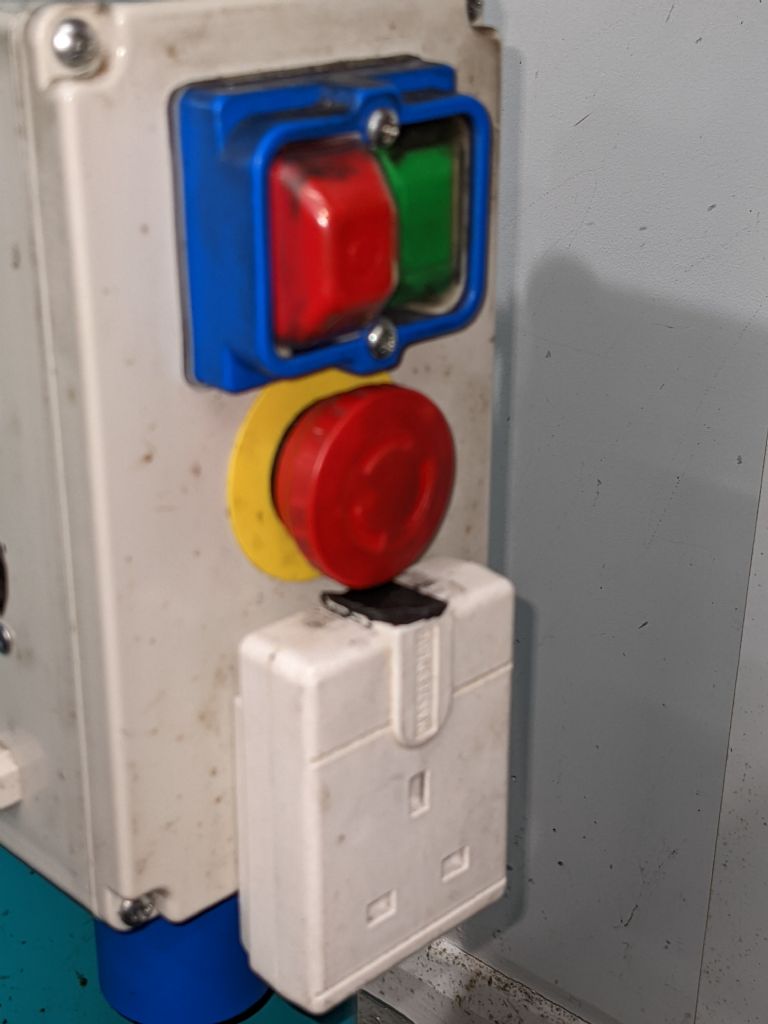There are several different ways of providing emergency stop depending on the nature of the emergency.
If there is a mechanical/operator entanglement emergency the machine may need to be stopped as quickly as possible which may require a mechanical brake or an inverter to apply regenerative braking. Having an eStop that removes power from the inverter prevents regenerative braking.
However if there is an electrical emergency such as fire or electrocution, then an eStop that removes all power, is appropriate.
An inverter eStop will trip the inverter and will require power to be cycled to reset it or a dedicated input used as a reset.
In a complex machine a risk assessment and FMEA will govern what/who handles an emergency stop and how it is handled.
Modern electrical safety requirements requires any device made of a conductive material (metal) to be earthed whether there is electrical power connected to the device or not. The thinking here is that the device could become live if a device with an undetected fault came into contact with it. So for instance a steel central heating radiator in your house is required to be earthed. This is normally provided by the copper pipes but with the increasing use of plastic pipe and fittings earth continuity may be lost and supplementary earthing is needed.
An electrical machine such as a lathe would normally have two independent earth connections with one that can be visually checked for presence. The thinking here is that a single failure, ie broken earth wire, should not cause a machine to become unsafe and no special equipment is needed.
Domestic dwellings now have to have a residual current trip device (earth leakage trip) but there are many that have not been upgraded so good earthing practice is always wise and you can't have too many belts and braces.
Clive S
Emgee.





